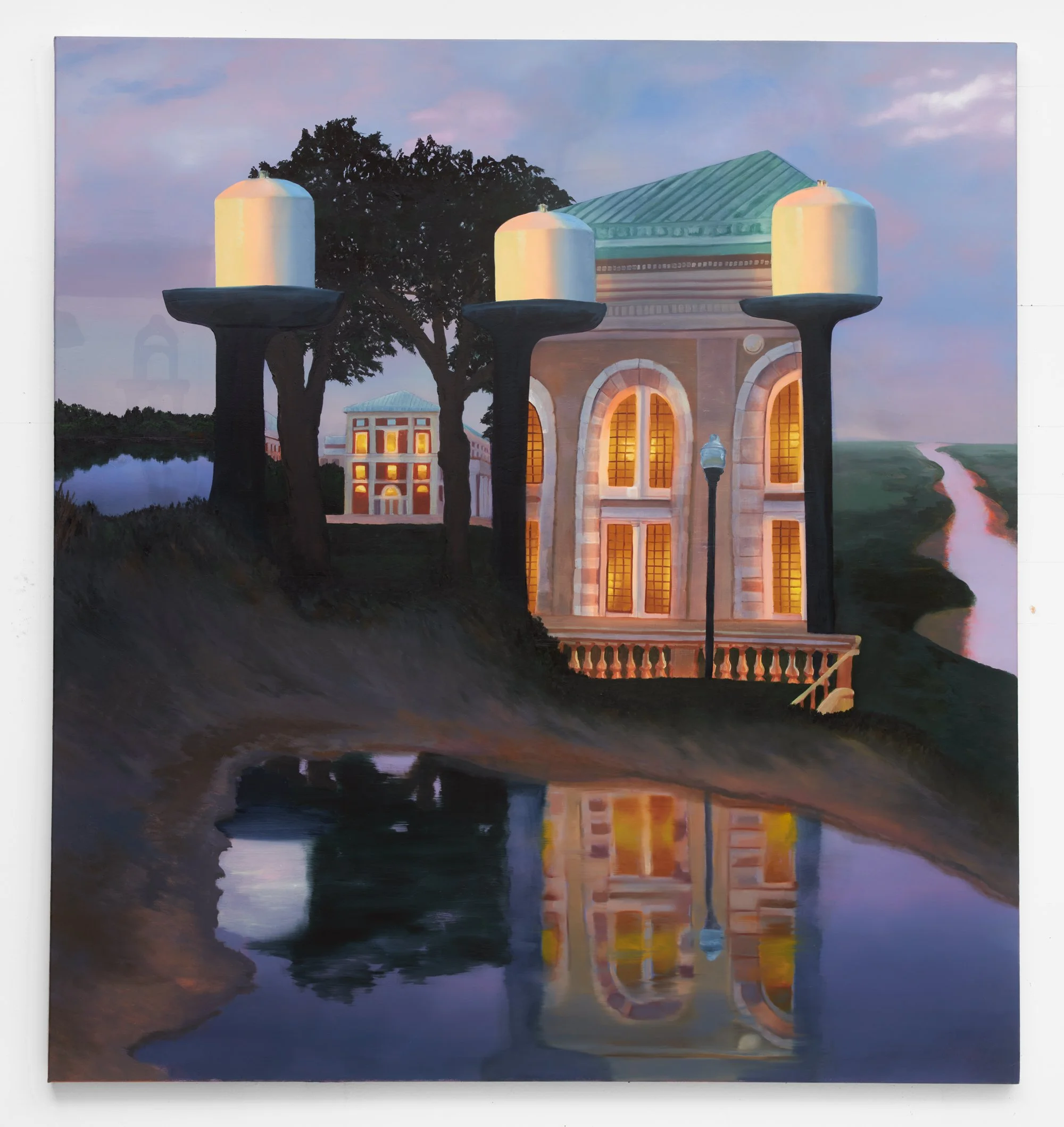KELSEY SHWETZ
A Lamp is Not the Only Sign of Glass
Artist Reception: September 21st, 6-8 PM
September 21st - October 14th, 2023
The show title here quotes a passage from Gertrude Stein’s poem “Tender Buttons [A Plate].” The exhibition premise is simple: what if light itself was the main character in our story? Raking light, divine light, natural light, artificial light, even shadows all have their cameos in Kelsey Shwetz’s lantern room. What we find illuminated reveals traces of human presence, phantoms of activity (“The Light Fell on Her Face in a Gentle Network of Shadow”) as well as inanimate objects taking on a figurative form (“Spectre,” “Portrait of an Ending”). Reflections in windows and water allow the viewer to see part of the world in the painting that is out of frame- either directly removed from the action or else behind the “scene” (the mirror of water in “Orchid Bath,” the clouds depicted in “Cold Frame” on a pane of greenhouse glass).
In 1953, Rose Macaulay published “The Pleasure of Ruins,” an ode to the reverence paid for the remnants of past civilizations. in "Ruin (Lantern)" Kelsey also admires traces of our collective history with a series of architectural interventions which break up a space of uncertain scale into rhythmic beats: fluid, fast-moving triplets that enliven the calm of some crepuscular hour. Three large, ambiguous objects—somehow devotional—serve as markers of change, condensing the shifting light and segmenting the visual field. These segments introduce a filmic quality, silo-ing the space into contiguous frames. The edges of the canvas radiate a certain stillness, trees and water out of Poussin. The two inner areas, meanwhile, seem to present campus scenes, a copper-roofed building lit from within. In the more distant, there is a general air of stateliness, an air troubled by the closer, in which the building becomes pure facade, a kind of Potemkin surface which throws the whole picture into surreal relief.
In “Temenos,” the composition mirrors Böcklin’s “Ruin by the Sea,” a painting which extends the universe of his famous “Isle of the Dead,” while placing the emphasis on different foundational elements of the picture. Kelsey returns to ideas set out in earlier paintings—”Revenge” and “Dawn,” in particular—by bringing them into a new mood, a more cordoned-off atmosphere. There are intimations of catastrophe, of fires burning unseen. On the whole this tableau reads as darker, the title still suggests that refuge might lie down the shadowed opening: “temenos” is the Greek for a sacred place set apart. Böcklin’s romantic sky, sun pouring through clouds, is replaced by signs of more direct human intervention, as a tin ceiling surrounds an art nouveau dome. The cypress trees and a row of arched niches become watchful presences, an obscure chorus chanting the viewer toward whatever hidden possibilities the island holds.
In its totality, Kelsey Shwetz’s exhibition reminds us again that refraction is abstraction and that the past is always with us, simply seen from new vistas.
Kelsey Shwetz is a Canadian painter who received her MFA from Columbia University in 2022. She has been awarded multiple grants and scholarships internationally including the Choy Family Fellowship and twice from the Elizabeth Greenshields Foundation. In 2023, Kelsey staged solo exhibitions at Coulisse Gallery in Stockholm and Cadet Capela in Paris.
To make an appointment click HERE
For inquiries email erin@halfgallery.com



